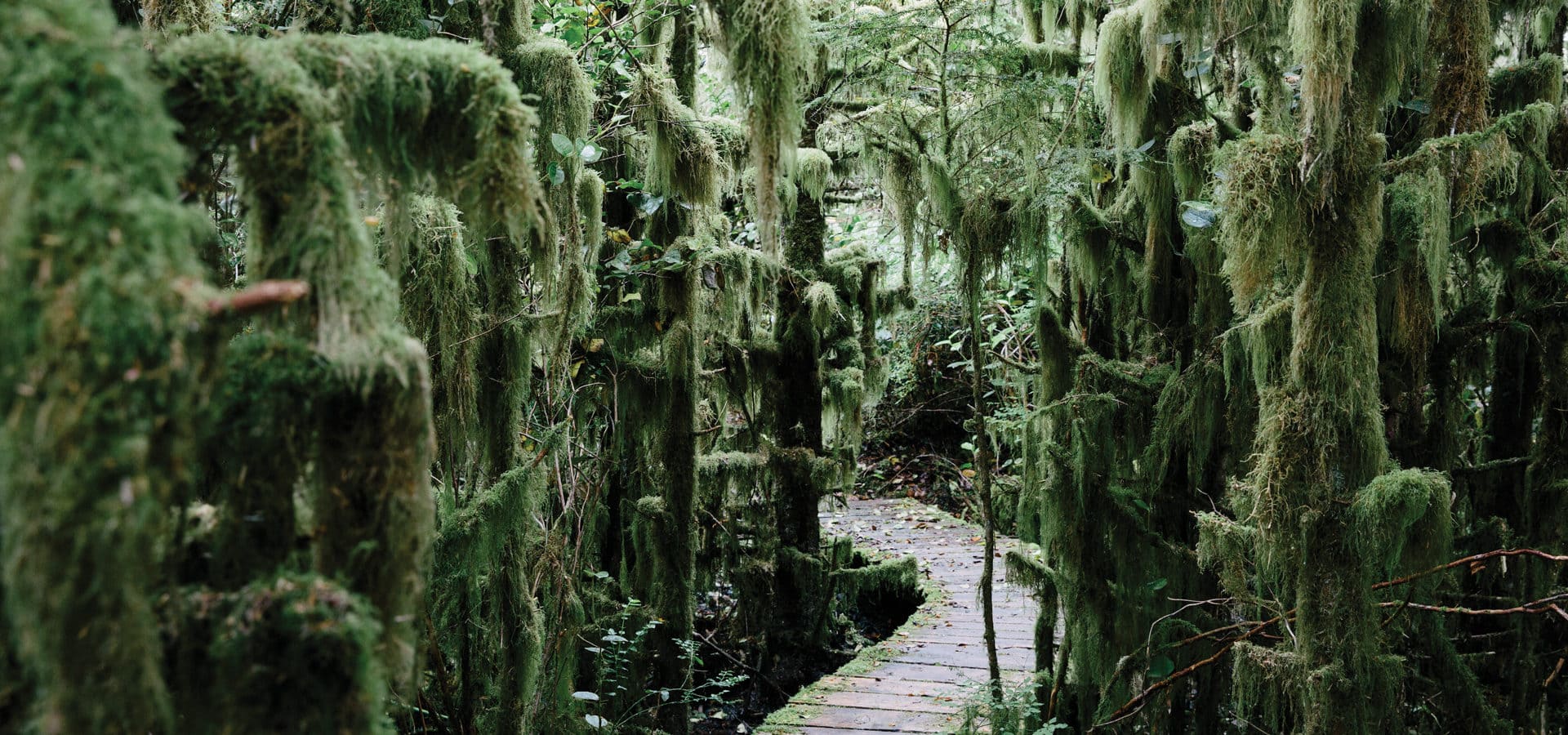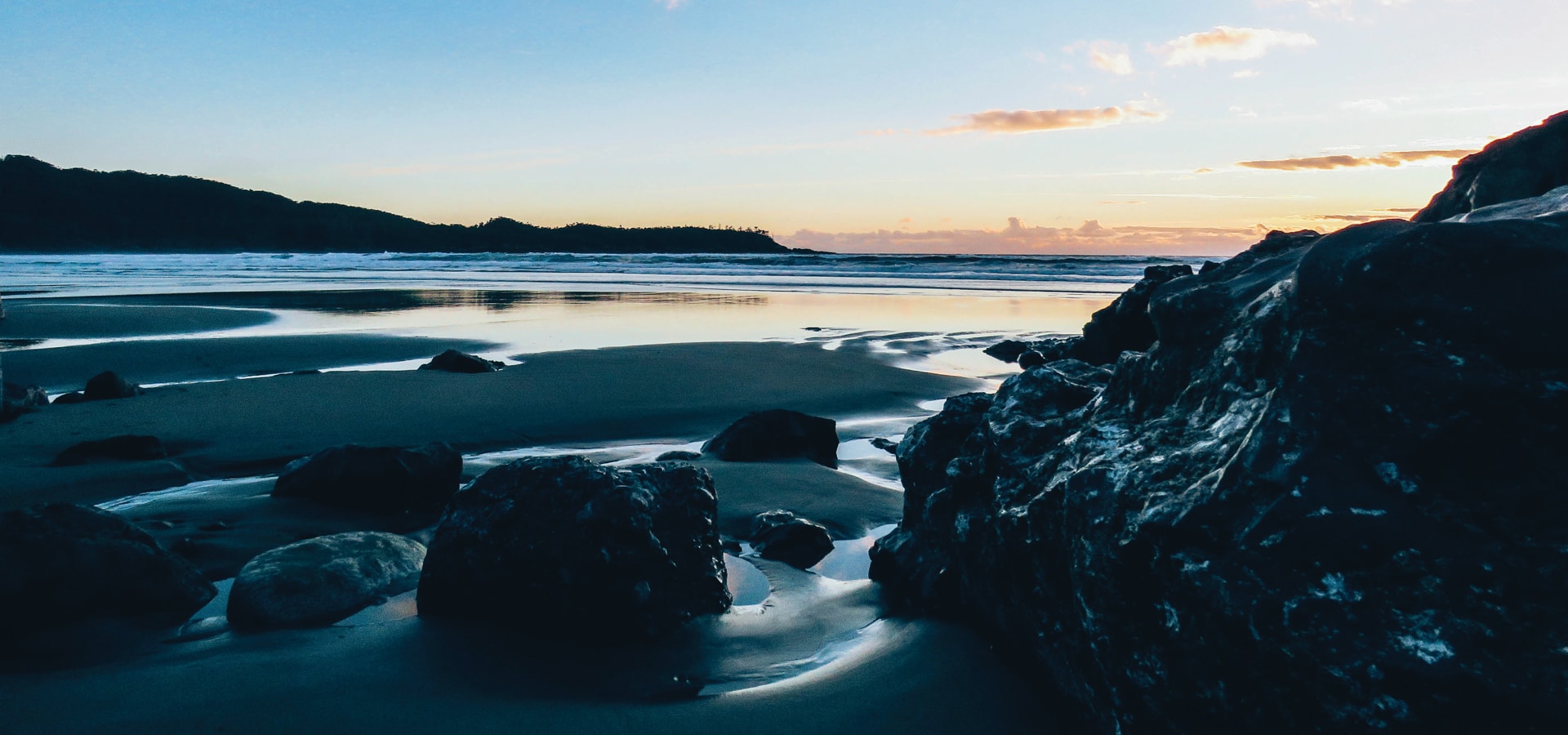Travel to British Columbia for Surf and Sport
Itinerary included.
-
CategoryTravel
-
Written byJennie Nunn
Dotted with ancient rainforests, top surfing spots, glaciers, sea life and coastal scenery, the islands of Canada’s Pacific Coast are some of the most picturesque in the world. Here our itinerary begins in Tofino, Vancouver Island and moves on to Haida Gwaii, an archipelago that’s known for its rampant wildlife.

Tofino, Vancouver Island
Located approximately 45 minutes by plane from Vancouver, Tofino on the western edge of Vancouver Island is known as one of the prime surfing destinations in Canada. The laid-back coastal town set along the Pacific Rim National Park Reserve (once the misty backdrop for the film The Twilight Saga: New Moon) offers everything from kayaking and bear-watching tours with Jamie’s Whaling Station to artisan shops, restaurants and galleries.
At the Tofitian café, grab a London Fog tea latte and hear the surf report from locals. Plan a day at one of the island’s beaches (Cox Bay, Long Beach or Chesterman Beach), and pick up house-made meats and provisions from Picnic Charcuterie, or head to nearby Summit Bread Co. for fresh-baked rosemary cheddar bread and chocolate. For dinner, head to Wolf in the Fog for entrées including Dungeness crab arancini and island chicken with cauliflower, potato, butter chicken sauce and raita.
Where To Stay
Nicknamed “The Wick,” The Wickaninnish Inn is surrounded by the Pacific Ocean and an old-growth forest. The woodsy property features 75 guestrooms and suites with soaker tubs and gas fireplaces and an acclaimed restaurant, The Pointe. There is also a wine cellar with 8,500 bottles and a 20-foot single yellow cedar slab table that seats 18. wickinn.com
Situated along Cox Bay, Pacific Sands Beach Resort just unveiled a $1.2 million renovation for beachfront Lodge Suites that offer modern furniture and updated kitchens. Learn to surf at the on-site surf school or fuel up at Surfside Grill with a salmon burger or a crispy chicken burger. pacificsands.com

Haida Gwaii
For an off-the-beaten path experience filled with adventure and history, Haida Gwaii is an outdoor paradise. Situated approximately two hours north by plane from Vancouver, the main towns include Masset and Skidegate with about 4,500 total residents.
Start with a visit to the Haida Heritage Centre—a museum with Haida historical objects and archeological artifacts, monumental poles and a café. At Sgang Gwaay, a 19th-century village at the southern tip of the Haida Gwaii archipelago, learn about village ruins and marvel at 32 carved memorial and mortuary poles. Take a guided cultural tour of Gwaii Haanas National Park Reserve on a 28-foot zodiac with Haida Style Expeditions.
Where To Stay
Located near the Tlell River, Haida House at Tllaal is the ideal home base for exploring the islands. Originally built in the 1980s, the 10-room lodge is set on 50 acres with a fruit orchard and forest trails. haidahouse.com For complete seclusion, opt for newly opened Ocean House (Haida House’s sister property), a fly-in luxury wilderness lodge replete with a spa. oceanhouse.ca

Local Talent: Environmental Artist Pete Clarkson
Pete Clarkson’s artistic debut was sparked in the most unlikely of ways. One day he spotted a washed-up item on one of his daily hikes—remnants of an old wood shipping box. “As humbling and calming and ultimately satisfying as it can be in close contact with the ocean and nature, I got really depressed hiking the shoreline and finding all the garbage—even in a national park,” says the Tofino-based artist. “When I found the piece, I laughed, I cried and I was inspired … so I took it home. Little did I know that that small beginning would become a major turning point in my life.”
When he’s not creating, Pete works as a park warden and visitor safety specialist at Pacific Rim National Park Reserve. According to the artist, whose work is exhibited at the Tofino Botanical Gardens and Canadian Museum of Nature, his job of 35 years has influenced his work. “My passion for the ocean, wild landscapes, fresh water and birds often shows up in my art,” he explains. “That’s not to say it is the main theme of every piece, but the material itself carries a constant environmental message.”
The artist has been collecting washed-up debris for more than 20 years along the shoreline of Vancouver Island. He has procured everything from hockey gloves and shin guards to an ornate Japanese chalk measuring tool called a sumitsubo, which came from the 2011 Tohuku tsunami.
“I honestly try to take delight in everything, confident that the process is part of the journey,” says Pete. “The payoff is that the whole process is filled with a sense of discovery, adventure and promise.” peteclarkson.com
Join the Valley Community









